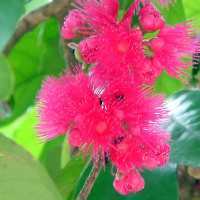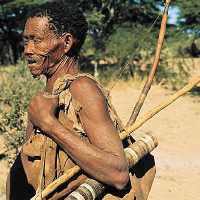
|
||

|
||

GRASSLANDS Hunter Card
|
||
© Nov 2010
Alan S.L. Wong
This game has been played only in my mind and not in reality so there may be a fair bit of kinks. Appreciate your comments via feedback form on how to improve the game ... the cards and the rules.
PREPARATION:
- Print the cards with background so that the cards are framed with the rounded corners and shaded borders.
- For Internet Explorer: watch this animation
Additional step may be required - Choose "File" on menu bar and click "Page setup"
... select the "Print Background Colors and Images" check box, and then click OK.
ALTERNATE SOLUTION FOR IE: Open IE then press ALT+F+U on your keyboard;
select the "Print Background Colors and Images" check box
- For Firefox: (1) Click "File" - "Page Setup". (2) In the pop-up window, under "Format & Options" tab, check "Print Background (colors & images)" in the "Options" section
- For Chrome: Sorry. I don't know how to do it!
- For Internet Explorer: watch this animation
- Print cards from at least two habitats (depending on the number of children) ... 10-12 cards per child.
- You may want to print duplicate of the "Misc" cards consisting of sun, plants, habitat & hunter cards.
- Consider printing the cards on thick paper and laminating them for durability.
- Appoint a child to shuffle and distribute the cards (face down) equally among the children.
- You begin by shouting a habitat. The child on the right of the dealer in (1) will have to play a card from that habitat ... by placing an appropriate card face up on the table.
- The next child on the right will play the second card. The second card must be ...
- an animal, plant or hunter from the same habitat.
- sun (not habitat-bound), hunter (generic) or another habitat card (he must shout "Change Habitat")
- an animal, plant or hunter from the same habitat.
- General rules to decide the winner of the two cards
- sun wins all
However, a player cannot play the same "sun" card more than 3 times.
On the 3rd time, the "sun" card is a "transparent" card where it cannot win any card (but neither does it lose to any card). The "sun" card must be played if the player has no other card to play (see Rule #3 above).
Since the "sun" card is now transparent on the 3rd play, the habitat of the card below it applies.
This rule ensures that a player who is dealt with a "sun" card may not be the ultimate winner and that the "sun" card can be passed from one player to another in the game.
- man wins all except the sun
A player also cannot play the "generic hunter" card (not habitat bound) more than 3 times. The above rules for the "sun" card also apply to the "generic hunter" card.
However, the "habitat-bound hunter" card (e.g., grasslands hunter card) functions like any other card and there is no limit as to the number of times it may be played.
- carnivores win herbivores & omnivores
- carnivores vs plants - a draw
- herbivores win plants
- omnivores win plants & herbivores
- two carnivores, the heavier (max weight) wins
- two omnivores - a draw ... then the next person on the right will play the next card
- two herbivores - a draw
- if a (different) habitat card is played, no winner; the next person on the right will play
- sun wins all
- For specific rules, look at the "Diet" and "Predator(s)" in the respective cards
- Winner takes the cards on the table and the next person on the right can play a card (animal or plant) from any habitat.
- Game continues until a child has all of the cards.
WHAT WORKED BEST IN THE CLASSROOM:
The following is a feedback and suggestion from a visitor:
Comments: I'm impressed by the amount of work you put into each card! All the links work and it's easy to navigate.
What worked best in the classroom: Print the cards for each habitat and keep separate. Then, have 5-6 students work with each habitat separately. This eliminates the need for the habitat switch card.
Then, each student plays a card simultaneously. They must read the diet and predators of their cards to determine who takes what cards.
For example, if a player plays plants and the rest play carnivores, the player who plays plants gets to keep his or her card while the others decide which card eats which. They collect all the cards they consume, even the ones that would be eaten by another card first. It helps demonstrate the food chain a lot better!
Name: Casey Quigley from Colorado, USA
The following scenarios were encountered by Susan Damron from Los Angeles, CA.
"I thought you might be interested in some follow up comments/questions based on how the kids played today. First, we had 33 kids so we had to shuffle and use all the cards. We separated the kids into 4 game teams. Based on the number of cards and the number of kids, each kid had 7 cards."
Scenario #1: Player 1 plays a lion, Player 2 plays a plant (which according to your rules is a draw), Player 3 plays the Hunter card and Player 4 plays the Sun card.
My Answer: Since it is a draw for Players 1 and 2, both cards remain on the table. Player 3 plays the hunter card which "eats" the "plant" on the top; he also takes the "sun" card. Then Player 4 "sun" card will win whatever card Player 5 plays.
Scenario #2: Player 1 (P1) play a small carnivore, P2 played a plant - which creates a draw, P3 played another small carnivore, but it weighed more than P1's animal so P3's animal won, then P4 played a larger carnivore. Play ended with P4 winning but the question is what happens to P2's plant card?
My Answer: P1 - small carnivore; P2 - plant >> a draw ... both cards remain on the table with P2 plant card on top. P3 - another small carnivore will draw with the top card (P2 plant card) ... all 3 cards remain on the table with P3 carnivore card is on top of the pile. P4 - a larger carnivore which will eat the top card (P3 small carnivore) >> P4 takes all 3 cards.
Scenario #3: In this round, we had an ape that was omnivorous and a tree frog that was a carnivore. According to the rules, the carnivore wins over the omnivore, but this seemed rather odd that a frog would beat out an ape. Thoughts??
My Answer: Carnivore wins omnivore is a general rule. For specific rules, look at the "Diet" and "Predator(s)" in the respective cards. In the above scenario, it would be a draw >> both cards remain on table.
Scenario #4: A player leads with a mountain lion. The next 3 subsequent players passed having no mountain habitat plants/animals, hunter, sun, or change habitat cards. The 4th student did have a change habitat card and played it. Play continued to the food chains conclusion. The question is, what happens to the mountain lion card that was played? Does the player pull it back, does it stay on the table? Does the winner take it?
My Answer: The mountain lion card remains on the table. The challenge is always with the card on the top of the pile. Yes, winner takes all.
"These clarifications were very helpful. Again, thanks for a great game that was fun and educational for the kids. I am looking forward to doing again with next year's crop of kids. I will be checking back in to your website for any evolution of your rules and any new habitats/organisms. Great job, thanks so much."